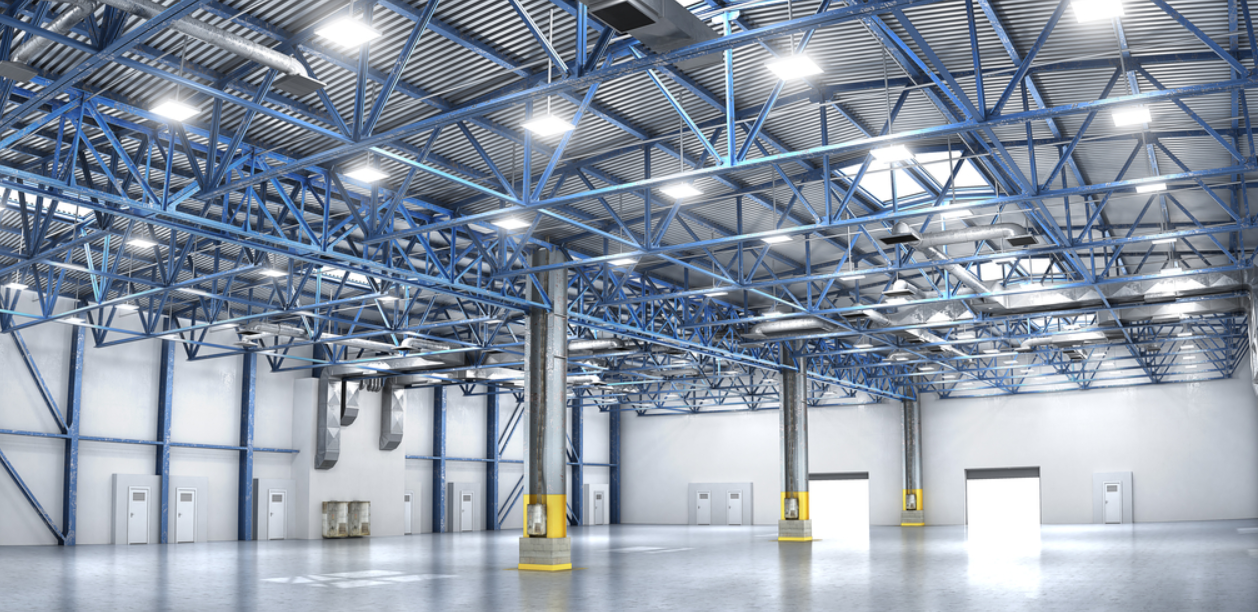In industrial settings, workplace safety is of paramount importance. Ensuring a safe and well-lit environment is not just a legal obligation; it is crucial for the well-being of employees and the overall productivity of the facility. Industrial lighting plays a pivotal role in creating a safe work environment, enhancing visibility, and reducing the risk of accidents. In this blog, we will explore how industrial lighting impacts workplace safety, the key factors to consider when designing a lighting system, and the benefits of prioritizing proper illumination in industrial facilities.
Improved Visibility for Hazard Identification:
Proper industrial lighting significantly enhances visibility, allowing employees to identify potential hazards and risks more effectively. Dimly lit or poorly illuminated areas can obscure obstacles, machinery malfunctions, or spills, making it difficult for workers to recognize dangers promptly. By investing in appropriate lighting solutions, such as LED high-bay lights, floodlights, or task-specific fixtures, industrial facilities can minimize accidents caused by inadequate visibility.
Preventing Trips, Slips, and Falls:
Trips, slips, and falls are among the most common workplace accidents in industrial settings. Insufficient lighting can exacerbate these risks, as employees may not be able to see uneven surfaces, debris, or changes in floor elevation. Implementing even and uniform lighting throughout the facility, especially in high-traffic areas and walkways, reduces the likelihood of such accidents and contributes to a safer work environment.
Enhancing Task Performance and Accuracy:
Accurate and efficient task performance is critical in industrial operations. Proper lighting allows employees to perform their tasks with precision, reducing errors and the likelihood of accidents resulting from mistakes. Task-specific lighting, such as spotlighting or directional lighting, can be employed to provide optimal illumination for detailed work or inspection tasks.
Mitigating Eye Strain and Fatigue:
Inadequate lighting can cause eye strain and fatigue, leading to decreased focus and productivity. Prolonged exposure to poor lighting conditions may result in long-term eye-related issues for employees. Implementing well-designed lighting solutions, including appropriate color temperature and brightness, can help reduce eye strain and fatigue, resulting in a more alert and productive workforce.
Properly Illuminated Emergency Exits and Routes:
In emergencies, quick and safe evacuation is paramount. Industrial facilities must ensure that emergency exits, escape routes, and safety equipment are adequately illuminated at all times. Maintaining a consistent level of illumination in critical areas helps employees navigate safely during emergencies, minimizing the risk of injuries and facilitating a swift and orderly evacuation process.
Reducing Workplace Accidents and Injuries:
Investing in high-quality industrial lighting can significantly reduce workplace accidents and injuries. A well-lit environment promotes awareness of surroundings, encourages responsible behavior, and enables employees to identify potential hazards promptly. By minimizing accidents, industrial facilities can not only protect their workforce but also avoid costly downtime, worker’s compensation claims, and potential legal ramifications.
Compliance with Safety Regulations:
Many countries have stringent workplace safety regulations that govern lighting standards in industrial settings. Compliance with these regulations is not only a legal requirement but also a moral obligation to ensure the well-being of employees. Properly designed and installed industrial lighting systems can help industries meet these safety standards and avoid potential penalties.
Conclusion:
Industrial lighting is not merely an illumination solution; it is a fundamental aspect of workplace safety and productivity. By providing proper lighting, industrial facilities can create a safer work environment, reduce accidents, and enhance employee well-being. Investing in high-quality lighting fixtures, ensuring even illumination throughout the facility, and complying with safety regulations are vital steps in promoting workplace safety and reaping the numerous benefits of a well-lit industrial space. A safe and well-lit workplace fosters a positive work culture, boosts employee morale, and ultimately contributes to the overall success and prosperity of the industrial facility.

